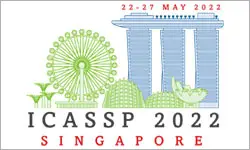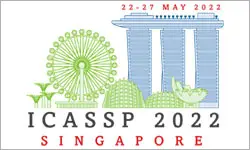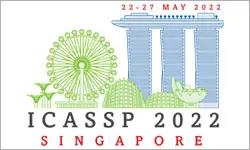MODULO EVENT-DRIVEN SAMPLING: SYSTEM IDENTIFICATION AND HARDWARE EXPERIMENTS
Dorian Florescu, Ayush Bhandari
-
Members: FreeSPS
IEEE Members: $11.00
Non-members: $15.00Length: 00:14:05
11 May 2022
In event-driven sampling (EDS) the signal is represented in terms of a series of spikes at non-uniform time locations. Owing to the limited dynamic range (DR), just like how conventional analog-to-digital converters (ADC) suffer from signal saturation, in EDS a similar manifestation is observed. Namely, when the input exceeds a threshold, no output spikes are generated. Recently, the Unlimited Sensing Framework (USF) was presented to overcome the DR limitation. In USF, the key idea is to fold the signal using a modulo non-linearity so that its DR is fixed. Subsequently, we combined EDS with USF leading to a new architecture called Modulo Event- Driven Sampling (MEDS), where a modulo signal is input to the EDS model. The goal of this work is to bridge the gap between theory and practice for a MEDS model. Our hardware experiments suggest that for the MEDS approach to work, there are system parameters that must be identified beforehand so that accurate reconstruction of the input is possible. To this end, we introduce a system identification methodology for MEDS that is backed by theoretical guarantees. Using synthetic and experimental data, we validate the performance of our approach, thus demonstrating the utility of system identification.



